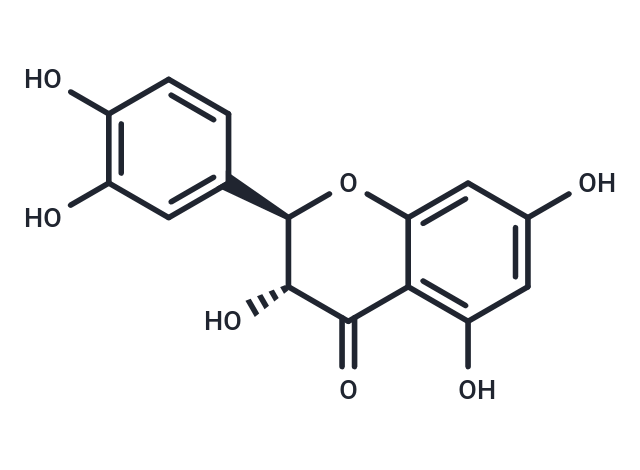Shopping Cart
- Remove All

Your shopping cart is currently empty


| Pack Size | Price | Availability | Quantity |
|---|---|---|---|
| 50 mg | $46 | In Stock | |
| 100 mg | $73 | In Stock | |
| 1 mL x 10 mM (in DMSO) | $50 | In Stock |
| Description | Taxifolin (Dihydroquercetin) is a flavonoid in many plants such as Taxus chinensis, Siberian larch, Cedrus deodara and so on. |
| In vivo | Taxifolin may be easily metabolized and that its metabolites are the prevalent form in vivo, although limited information is available on metabolism of Taxifolin in vivo[5]. Metabolites with the same fragment pattern may have the same pharmacophore. Thus these metabolites may exert the same pharmacological effects as taxifolin through an additive effect on the same drug targets. This observation indicates that taxifolin is bioactive not only in the parent form, but also through its metabolites. |
| Alias | (+)-Taxifolin, Dihydroquercetin, (+)-Dihydroquercetin |
| Molecular Weight | 304.25 |
| Formula | C15H12O7 |
| Cas No. | 480-18-2 |
| Storage | keep away from direct sunlight Powder: -20°C for 3 years | In solvent: -80°C for 1 year | |||||||||||||||||||||||||||||||||||
| Solubility Information | DMSO: 65 mg/mL (213.64 mM) Ethanol: 56 mg/mL (184.1 mM) H2O: < 1 mg/mL (insoluble or slightly soluble) | |||||||||||||||||||||||||||||||||||
Solution Preparation Table | ||||||||||||||||||||||||||||||||||||
DMSO/Ethanol
| ||||||||||||||||||||||||||||||||||||

Copyright © 2015-2024 TargetMol Chemicals Inc. All Rights Reserved.